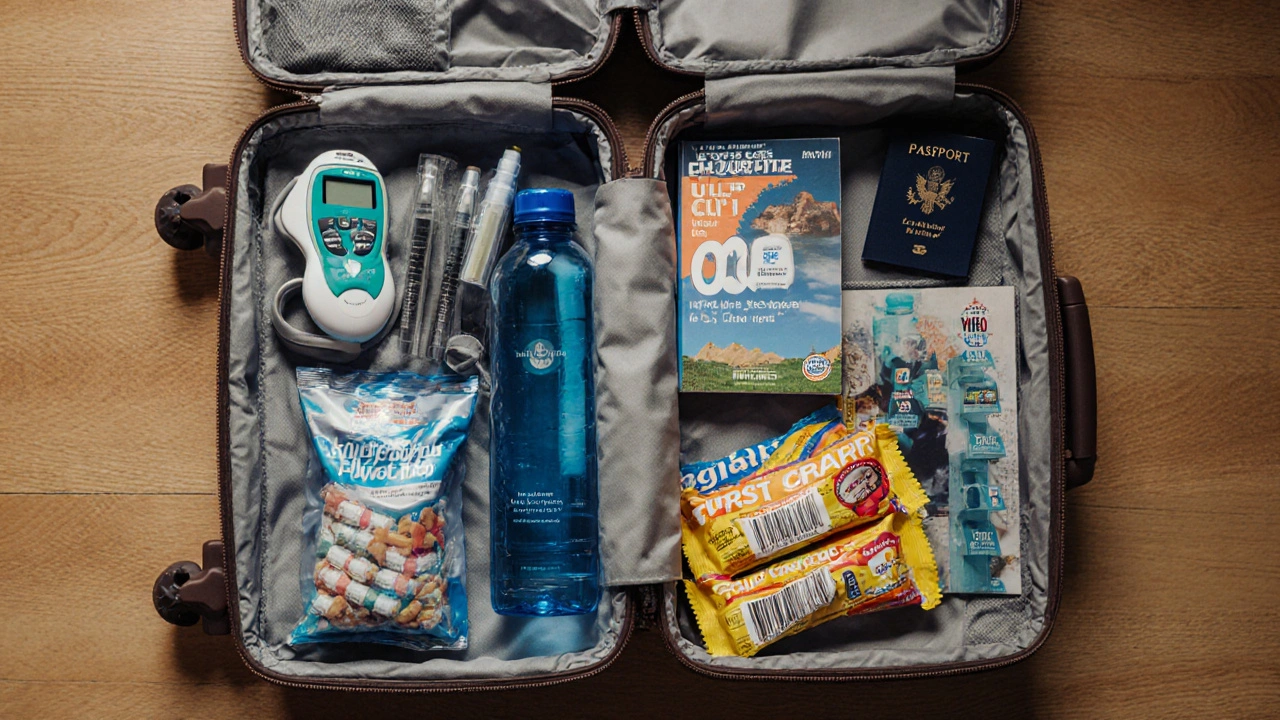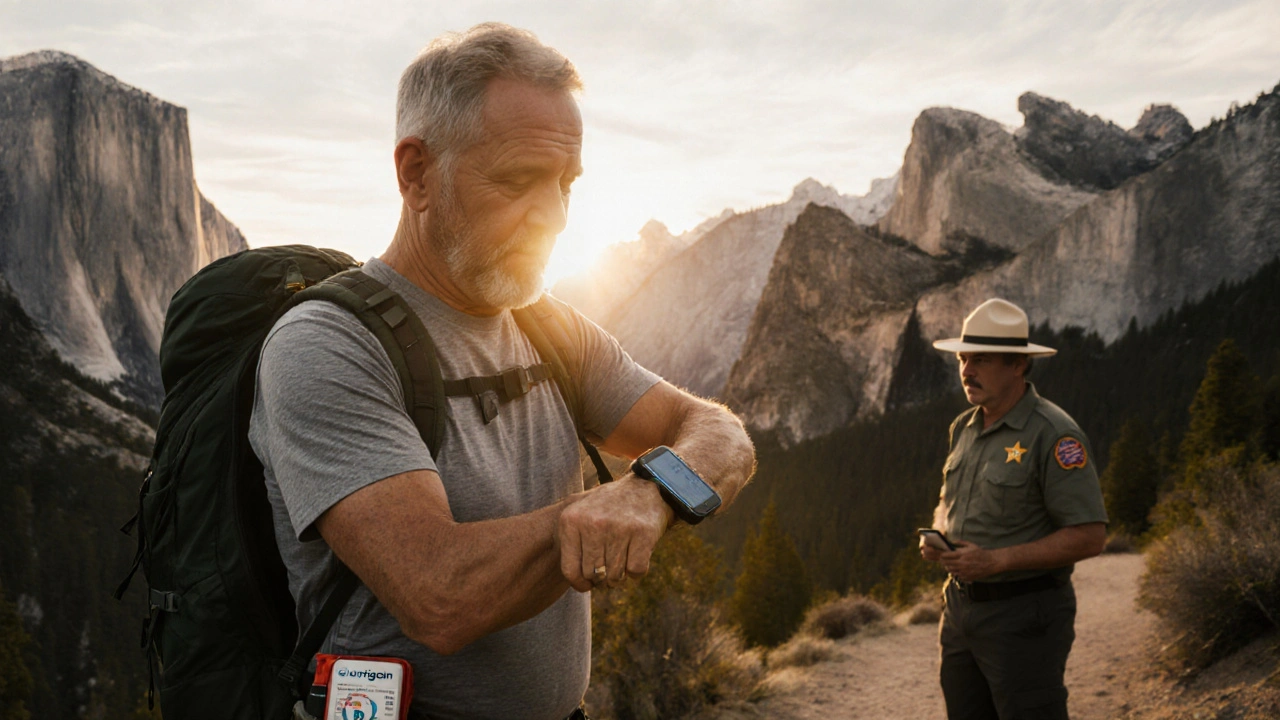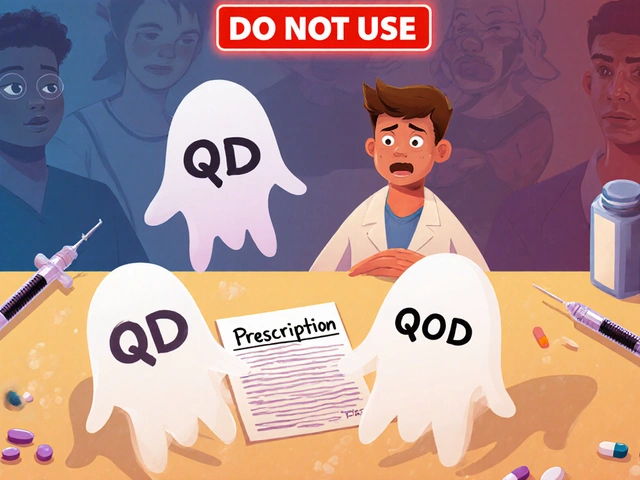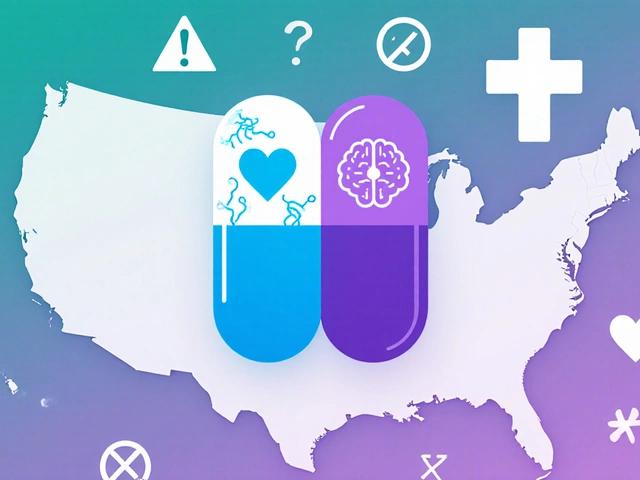Diabetes Travel Checklist Generator
Generate your personalized diabetes travel checklist based on your needs.
Quick Takeaways
- Schedule a doctor visit before you leave and get a travel-ready medication plan.
- Pack a complete diabetes kit: meter, strips, meds, cooler, and a medical ID.
- Adjust meal timing and carb counting to match time‑zone changes.
- Stay hydrated, move regularly, and know the local emergency number.
- Use apps to sync glucose data and share it with a travel buddy or doctor.
Understanding the Challenge
When you hear Type 2 Diabetes is a chronic condition where the body either resists insulin or doesn’t produce enough of it, leading to elevated blood glucose levels. Traveling adds stress, irregular meals, and unfamiliar healthcare options, all of which can throw your glucose control off balance. Knowing exactly how the disease works helps you anticipate what could go wrong and plan ahead.
Pre‑Trip Planning
A solid plan starts long before you board the plane. Book an appointment with your endocrinologist to review your current regimen and discuss any adjustments for travel. Ask for a letter that explains your condition, lists your prescriptions, and includes dosage instructions - most airlines and foreign doctors ask for this.
Don’t forget Travel Insurance that covers pre‑existing conditions. Look for policies that reimburse medication costs abroad and provide 24/7 medical assistance.
Set up a digital copy of your medical records. Apps like MyChart or Google Health can store lab results, medication lists, and emergency contacts, making them instantly accessible if you need help.
Packing the Right Gear
Every traveler needs a diabetes kit that can survive a suitcase‑check. Here’s what to include:
- Blood Glucose Meter is a portable device that measures your blood sugar in seconds. Bring a backup meter in case the first one malfunctions.
- Enough Test Strips for at least twice your expected travel days. They’re cheap to replace, but a shortage can be disastrous.
- All oral diabetes medicines you take daily, plus a few extra days' supply. Keep them in their original containers with pharmacy labels.
- If you use insulin, pack it in a Portable Cooler that meets airline regulations - typically a small insulated bag with a gel pack.
- A Medical Alert Bracelet that clearly states "Type 2 Diabetes" and an emergency contact number.
- Disposable lancets, alcohol swabs, and a small zip‑lock bag for used test strips.
- Snack bars or glucose tablets for treating sudden lows.
Store your kit in carry‑on luggage to avoid temperature extremes in the cargo hold.
Managing Blood Sugar While Traveling
Time‑zone changes are a silent blood‑sugar killer. Shift your monitoring schedule gradually a few days before you depart, aiming to align with your destination’s mealtimes. If you’re flying east, move bedtime earlier by 15‑30 minutes each night; if west, do the opposite.
Carb counting becomes trickier when you can’t read the menu in your language. Use the “plate method”: half non‑starchy veg, a quarter protein, and a quarter carbs. This visual guide works anywhere, whether you’re at a Thai street stall or a Parisian bistro.
Stay hydrated - dehydration spikes glucose. Aim for at least 2liters of water daily, more if you’re in a hot climate or doing lots of walking.
Move regularly on long flights or road trips. Every 30‑45minutes, stand up, stretch, or walk the aisle. Light activity helps keep insulin sensitivity steady.

Dealing with Emergencies
Know the local emergency number (e.g., 112 in Europe, 911 in the US). Keep a card with your name, diagnosis, medication list, and a brief instruction for treating lows and highs.
If you experience a severe hypo (<70mg/dL) and can’t swallow, use a glucagon auto‑injector if prescribed. Have a travel companion trained to administer it. For hyperglycemia >250mg/dL with symptoms, check your meter, hydrate, and consider an extra dose of rapid‑acting medication if your doctor approved “sick‑day rules.”
Locate the nearest pharmacy or hospital in advance. Google Maps, the International Diabetes Federation (IDF) directory, or a local expat group can point you to 24‑hour facilities that stock diabetes supplies.
Navigating Food and Exercise Abroad
When you can’t decipher a menu, ask the server for dishes that are “grilled, steamed or roasted” rather than fried. Request sauces on the side - they’re often hidden sugar sources.
Pack a small travel‑size kitchen scale if you’re staying in an Airbnb and want precise portion control. Even a gram of honey can throw a tight glucose range off.
Fit exercise into your itinerary: walk the historic district, rent a bike, or do a 10‑minute bodyweight routine in your hotel room. Consistent movement counters the sedentary nature of travel and helps maintain glucose levels.
Staying Connected
Sync your glucose readings to a cloud‑based app that lets you share data with your doctor in real time. Devices like the FreeStyle Libre or Dexcom G6 have companion apps that send alerts if your numbers go out of range.
Set up a “travel buddy” - a family member or friend who gets a daily summary of your readings. Knowing someone’s watching can motivate you to stay on track.
Quick Packing Checklist
| Item | Why You Need It | Quantity |
|---|---|---|
| Blood Glucose Meter | Measure sugar levels | 1 (plus 1 backup) |
| Test Strips | Readings require strips | 2×travel days |
| Oral Diabetes Medication | Maintain baseline control | Full course + 3 extra days |
| Insulin (if used) | Prevent highs | Travel‑approved cooler |
| Medical Alert Bracelet | Immediate identification | 1 |
| Portable Cooler | Keep insulin cold | 1 small insulated bag |
| Glucose Tablets / Snacks | Treat lows quickly | Enough for each day |
| Travel Insurance Docs | Cover medical emergencies | Printed + digital copy |
| Doctor’s Letter | Customs & airline proof | Original + copy |
Mini FAQ

Frequently Asked Questions
Can I bring my diabetes supplies through airport security?
Yes. Pack all medications, meters, and test strips in your carry‑on. Have a doctor’s letter and the original prescription labels ready for inspection. Liquids like insulin can exceed the 100ml limit if you declare them.
What should I do if I lose my glucose meter abroad?
Contact your device’s customer support - many offer temporary replacements shipped internationally. Meanwhile, use a finger‑stick meter from a local pharmacy while you wait for the new unit.
How can I keep insulin cool without a fridge?
A small insulated cooler with a gel pack works in most cabins. Store it under the seat, not in overhead bins where temperature can swing. Some travelers use a frozen water bottle as a makeshift cooler - the meltwater keeps the insulin safe.
Is it safe to eat street food with Type 2 Diabetes?
Yes, if you choose wisely. Opt for grilled meats, steamed veggies, and whole‑grain staples. Avoid sugary sauces and deep‑fried items. Test your blood sugar after the first meal to see how you react.
Do I need a separate prescription for travel?
Most countries accept a copy of your original prescription, but some require a local doctor’s note. Check the embassy guidelines of your destination a month before you go.







Julie Gray
September 29, 2025 AT 02:48